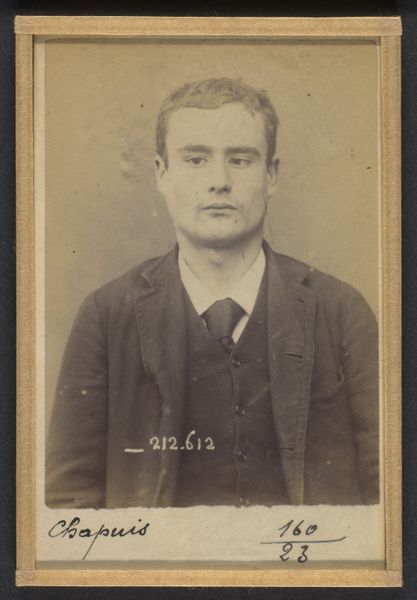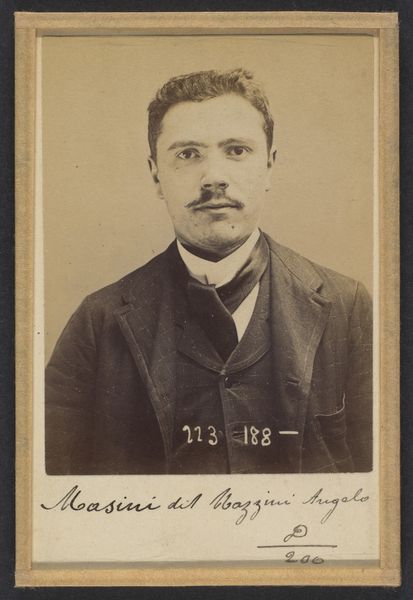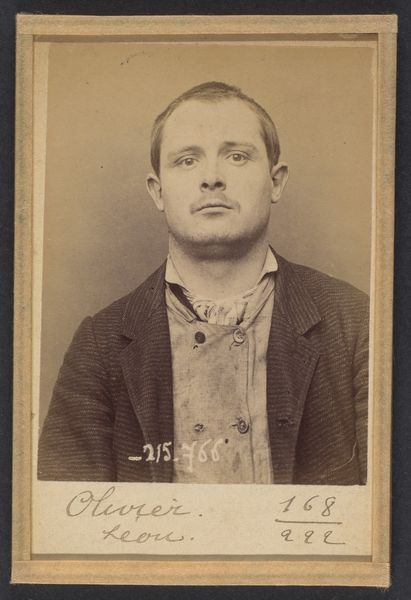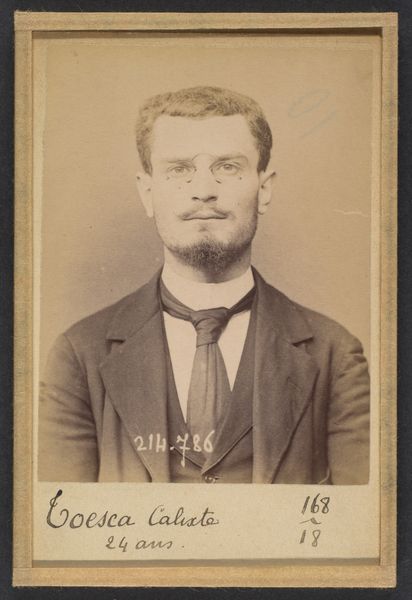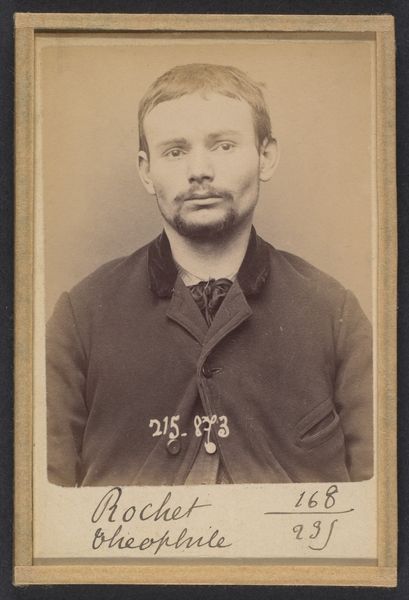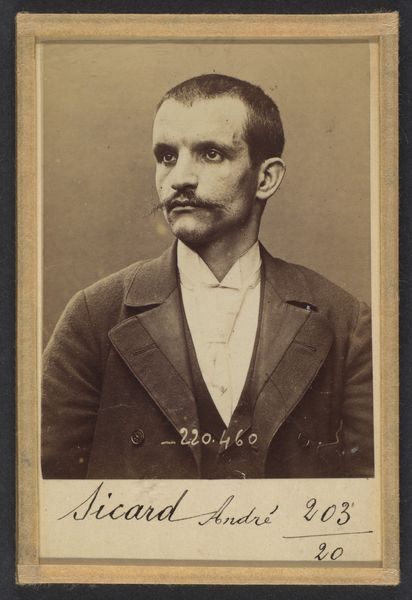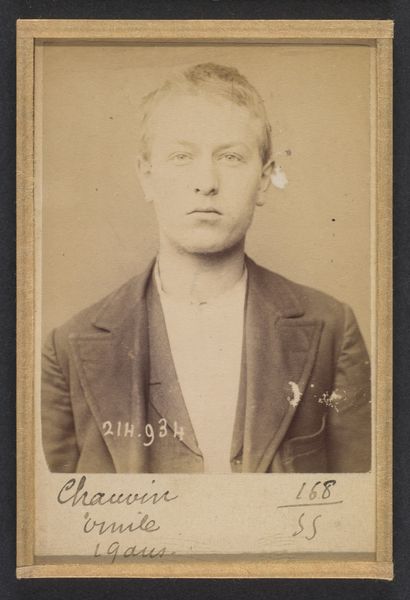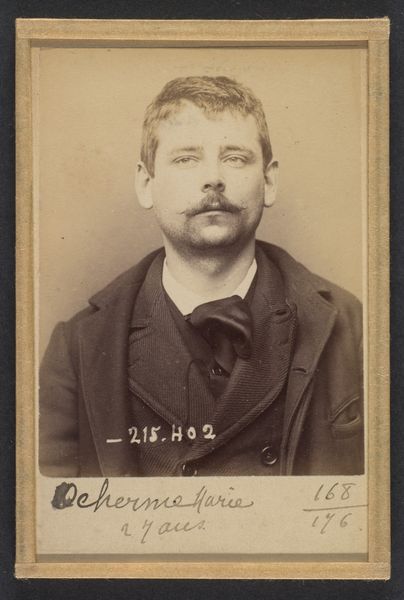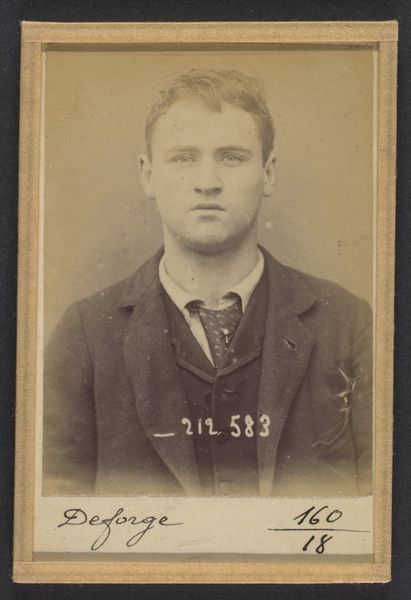
Martin. Pierre. 22 ans, né à St-Léger (Saône-et-Loire). Employé de commerce. Anarchiste. 27/2/94. 1894
0:00
0:00
c-print, photography, albumen-print
#
portrait
#
portrait
#
c-print
#
photography
#
ashcan-school
#
history-painting
#
albumen-print
#
realism
Dimensions: 10.5 x 7 x 0.5 cm (4 1/8 x 2 3/4 x 3/16 in.) each
Copyright: Public Domain
Editor: This is "Martin. Pierre. 22 ans..." an albumen print from 1894 by Alphonse Bertillon. The directness of the gaze is startling, almost unsettling. What story do you think this portrait is telling? Curator: It’s a compelling image, isn’t it? This is actually one of Bertillon's 'identification portraits,' a part of his system of criminal identification. Consider the socio-political context: late 19th-century France, anxieties about social order, the rise of scientific positivism... Editor: So, it's more than just a portrait, it’s data collection? The man is labeled an "anarchiste", how did Bertillon depict his alleged anarchy? Curator: Exactly. Think about the power dynamic here. Bertillon, an agent of the state, capturing this man within a system designed to control and categorize individuals deemed outside the norm. The gaze, while direct, is also framed, controlled by the bureaucratic gaze of the law. Editor: It's almost as though the man’s identity has been reduced to a label, stripped bare of his humanity. It's interesting that even the supposed objective realism of the photograph is influenced by bias. Curator: Precisely. It makes you think about the politics inherent in image-making, and how even seemingly objective documents can perpetuate social control and bias. Did anything in the curatorial choices strike you? Editor: It is located in the Metropolitan Museum of Art, New York, NY, why do you think they included this mugshot in the exhibit? Curator: Placing Bertillon in an art institution opens questions about artistic value, surveillance, and its relationship with political power. Do you feel differently about art after exploring this artwork and these questions? Editor: This photograph helps us realize that it is vital to always consider historical, cultural, and socio-political contexts in the understanding of art. Thank you for providing your expert opinions. Curator: My pleasure! Keep questioning those contexts; that’s where art history really comes alive.
Comments
No comments
Be the first to comment and join the conversation on the ultimate creative platform.
